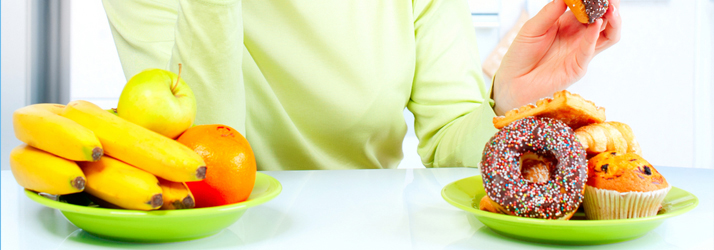(Don’t) Trust The Process(ed)
(Don't) Trust The Process(ed)

We’ve all heard the term processed food, but what is it? Isn’t food just food? I mean what makes one item processed and another item simply regular food? According to a definition on CookingLight.com processed food is - a food item that has had a series of mechanical or chemical operations performed on it to change or preserve it. Processed foods are those that typically come in a box or bag and contain more than one item on the list of ingredients. It’s the last sentence of the definition that best describes the easiest way to spot the difference between processed food and unprocessed food. These foods “ typically come in a box or bag and contain more than one item on the list of ingredients. “ Since there is no up without down, no heads without tails, no cold without hot, we need to understand the opposite of processed food before we can really determine if it’s good or bad. If processed food has “ more than one item on the list of ingredients, “ then we can quickly deduce that an unprocessed food would be any food containing no more than one ingredient i.e. fruits, vegetables, grass fed animal proteins, legumes, and grains that have not been processed in any way.
Now that we have a foundational knowledge of what the differences are between processed and unprocessed food. The first question that comes to mind would be is one better than the other? We’ll get to that, but before we do, shouldn’t we figure out what some of these ingredients are that go into our food and why they’re there at all? Well for starters, trans fats were invented in the 1890s and entered the food supply in the 1910s. Some processed foods became available as early as the 1910s: Nathan’s hot dogs, Aunt Jemima syrup, Hellmann’s mayonnaise, Oreo cookies, Crisco, and Marshmallow Fluff. In the 1920’s women were looking for “ ready made “ foods that took less time to prepare. Then the depression hit and families were forced to do the same as they used to with less money. This led to using more and more cheap food which had less nutritional value. From the depression, America went practically straight into World War ll during which we saw the introduction of so-called “ convenience foods.“ These came about due to the food rationing happening to feed soldiers serving overseas. Although similar types of restaurants had originated in the early 1900’s, in years following the end of World War ll, we saw increasing popularity in speedy food. The 50’s saw the birth of several fast food restaurants, as well as larger highways, leading to more travel, and an increasing acceleration of society’s overall pace. There are many other common ingredients used in processed foods and albeit those chemicals and ingredients are important to study and understand, we won’t go too in depth today, but a quick Google search would provide a sufficient list. One interesting thing you could delve further into would be the involvement of oils in our food such as: vegetable Oil, soybean oil, corn oil, canola oil, grape seed oil, and hydrogenated oils.
Moving on from understanding what “ processed “ food is, we now ask, is it good or bad from a health perspective? The quick answer - bad, but why? Most people we see who come into the clinic looking to shed inches and lbs have a diet composed largely of these types of food. The problem with these foods, besides the fact that our body simply wasn’t meant to consume them, is their lack of nutrient density. In addition to this they have an abundance of fillers such as gluten, wheat germ, food coloring dye, and high fructose corn syrup to name a few. Ever looked on the back of a wrapper and read, or attempted to read, all of those hard to pronounce ingredients? Yeah, those are bad for you. People actually get addicted to junk foods and I mean literally addicted. An article on Healthline.com had this to say about the issue - “ Processed foods are usually engineered to be hyper-palatable so that they taste really good. They also contain high amounts of calories and cause significant blood sugar imbalances. These are known factors that can cause food cravings. However, the biggest contributor to addictive-like eating behavior is the human brain. Your brain has a reward center that secretes dopamine and other feel-good chemicals when you eat.” These foods become, in essence, a drug to people and the detrimental effects to their health are not unlike any other kind of deadly addiction. Not only are they addictive, but they cause you to eat more. If you made the choice tomorrow to only eat single ingredient foods, your energy levels, quality of sleep, recovery, immunity to disease, as well as your overall health would begin to take an uptick.
As if the other detrimental health effects already covered here aren’t enough, these foods have been found to negatively affect, increase, and even have part in causation of conditions such as ADD or ADHD. So not only do processed foods impact the health that we can see and feel, but they carry over into our mental and physical health below the surface. Another way they impact our bodies is through increasing the triglyceride count. An article put out by Mayo clinic plainly spells this out. “ High triglycerides may contribute to hardening of the arteries or thickening of the artery walls (arteriosclerosis) — which increases the risk of stroke, heart attack and heart disease. Extremely high triglycerides can also cause acute inflammation of the pancreas (pancreatitis). High triglycerides are often a sign of other conditions that increase the risk of heart disease and stroke, including obesity and metabolic syndrome — a cluster of conditions that includes too much fat around the waist, high blood pressure, high triglycerides, high blood sugar and abnormal cholesterol levels. “ On top of this, the toxins in the processed food can cause a fatty liver, which if not properly dealt with can lead to cirrhosis, scarring of the liver, and eventually death. The amount of damage done to the body through the consumption of man made foods is immense and has innumerable far-reaching negative effects, even beyond what we’ve covered here.
In conclusion, how soon should you stop eating these processed, toxic, and highly addictive foods? The best would have been years ago, but the second best time is today. I will warn you that going from 0-100 on this will be tough. That being said, start with changing one meal a day for a week or so, then 2 meals for another week, then change all your snacks, and finally your 3rd meal. Be fully prepared to go through withdrawals, cravings, headaches, and even some mood swings. Your energy may dip for a few days, but it will be vastly improved when it comes back up. Overall you will be in a significantly better state of health and have a better quality of life when you make the change to eating primarily single ingredient, natural, unprocessed foods. A healthier body will lead to a healthier life in all aspects. We hope this helps you on your weightloss and health journey.
References:


